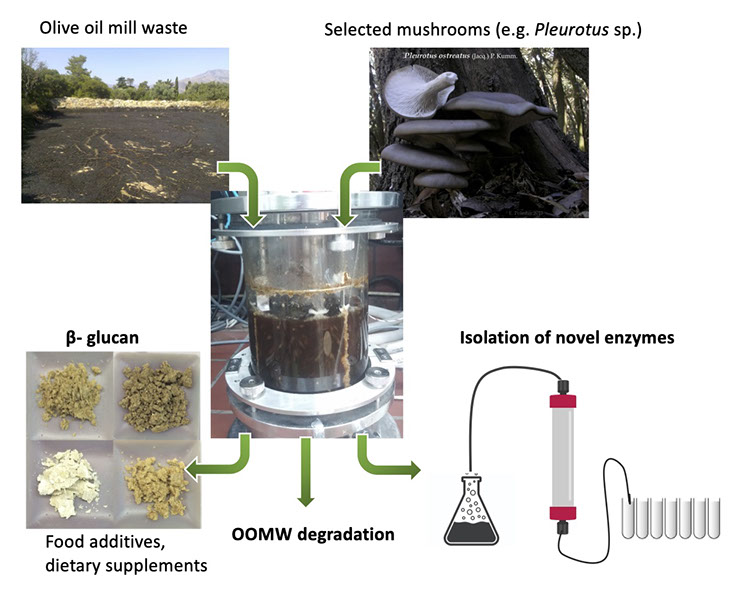
Discovery and characterization of novel oxidative enzymes from ligninolytic fungi – Applications in the field of Biocatalysis
Ligninolytic fungi are a microorganism group of significant biotechnological value, due to their ability to degrade a variety of lignocellulosic substrates, together with agroindustrial wastes and toxic organic effluents, resulting to their complete degradation. With the use of these microorganisms, valorization of agroindustrial wastes is possible, through the isolation of valuable dietary polysaccharides from the fungal biomass. The complete degradation of lignocellulosic biomass from ligninolytic fungi requires a highly complex enzymatic system, and therefore, these microorganisms are a rich source of novel industrially relevant biocatalysts. Ligninolytic oxidoreductive enzymes are widely used for a variety of applications, industrial or other, while their use in bioremediation is of great importance. The organic synthesis of value-added chemicals with the use of environmentally – friendly biocatalyst processes, aiming at the cost – effective production of compounds with possible use in the pharmaceutical or polymer industry, is an alternative to the troublesome chemical synthesis of organic compounds already in practice. Currently, ligninolytic oxidoreductive enzymes are used extensively in biocatalytic applications, customized to meet specific needs, with the use of either single enzymes, or enzymatic mixtures (one-pot synthesis, enzymatic cascades).


